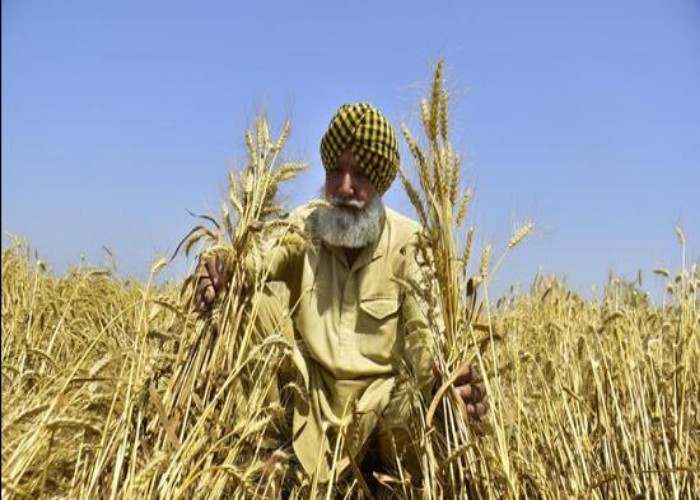New Delhi, May 17:
India’s federally-held wheat stocks in 2022-23 may fall to their lowest level since 2016-17, and second lowest in the past 13 years, with the government’s own purchases of the cereal likely being the lowest in 15 years. The staple’s offtake, which refers to withdrawal for subsidised distribution and open-market sales, has risen 38% over the last two years, official data show.
India on May 13 said it was suspending exports of wheat to manage its food security which is “at risk”.
The food ministry has said it had enough stocks to smoothly run the public distribution system. However, lower output due to a prolonged heat spell in March and record exports have necessitated a calibration of quantities of the winter staple that will be supplied through food schemes, pointing to a tight demand-supply situation.
The government’s export ban was prompted by a sharp rise in consumer inflation, which surged to an eight-year high of 7.79%, while food inflation touched 8.38%. Cereal inflation was fairly high at nearly 6%.
The government has kept a window open for overseas sales should a foreign neighbouring government make a request. An emerging issue, according to some analysts, is whether India can afford to export more wheat, after record overseas sales in the year ending March 31, and if the country will witness a further spike in domestic food prices.
For 2022-23, the government forecast a record output of 111.30 million tonnes in February, against 109 million tonnes the previous year. A scorching summer shriveled maturing wheat crop in several states, prompting the government to cut production estimates by 5.7% to about 105 million tonnes. The government will also buy a sharply lower quantity of wheat: 19.5 million tonnes, down from a targeted 44 million tonnes.
According to food secretary Sudhanshu Pandey, the country’s opening stock of wheat was 19 million tonnes, lower than last year’s balance of 27.3 million tonnes. “So, if you total up, against the stocks of 70.6 million last year, this year our stocks would be 37.5 million tonnes,” Pandey said on Saturday.
Yet, managing various cheap food schemes with these stock levels will be a tight exercise. “We had been screaming since the heatwave took place to review exports,” said farm expert Ramandeep Singh Mann.
Of the 37.5 million tonnes of total state-held stocks, the government needs to set aside 7.5 million tonnes due to emergency reserve norms as on March 31. This means the government has to make do with 30 million tonnes.
For the public distribution system, the government needs about 26 million tonnes. The Pradhan Mantri Garib Kalyan Anna Yojana (PMGKAY), the Covid-relief free food scheme that will run till September, will also require 10 million tonnes more.
Under PMGKAY, the government distributed an additional 10.3 million tonnes in 2020-21 and 19.9 million tonnes in 2021-22. This has raised offtake sharply to 50 million tonnes last year.
The government will also have to intervene in open markets by releasing stocks to tame prices if food inflation soars further. Last year, the Centre sold 7.1 million tonnes through open-market sales.
To adjust for lower wheat stocks, the Centre will cut down wheat supply under PMGKY and replace with 5.5 million tonnes of rice. It has also reduced allocation under the PMGKAY from 10.9 million tonnes to 5.4 million tonnes for April-September 2022.
India exported a record 7.85 million tonnes of wheat in the fiscal year to March, up 275% from a year ago. Before the export ban took effect, the country had already contracted to export 4.5 million tonnes as the government sought to ramp up overseas sales to plug a global void in wheat supplies due to Russia-Ukraine war.
These sales are expected to go through if formalities, such as letters of credit, have been issued, according to the government’s notification curbing exports. In April, the country’s traders sold 1.4 million tonnes overseas, taking advantage of high global demand and prices.
The country is required by a food-security law to distribute cheap grains to nearly 813 million people, apart from catering to other welfare schemes, such as school mid-day meals.





